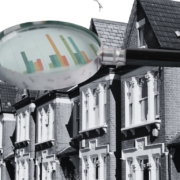Financial markets have been beset with shivers of anticipation of more aggressive interest rate moves, and as the clock ticks down to the key Federal Reserve meeting later, nerves are set to stay frayed.
The jitters have sent the Nikkei in Japan lower but Chinese data indicating a better recovery than expected after some Covid lockdowns eased, has helped lift the Hang Seng in Hong Kong and the Shanghai Composite.
Industrial output rose 0.7% in May from a year earlier, after falling 2.9% in April.
This is likely to support commodity stocks like miners but any ripples of relief are set to be shortlived.
Retail sales are slow to recover, still down 6.7% on the year in May, which doesn’t bode so well for luxury goods manufacturers.
The Chinese economy isn’t going to snap back to be a beacon of strength any time soon, particularly with parts of Beijing back in lockdown.
After another day wracked with uncertainty, indices on Wall Street ended pretty much flat-lining with the Nasdaq Composite closing slightly higher, but the S&P 500 losing ground again.
The FTSE 100 is also expected to open flat, as investors await the US Fed decision.
Expectations have risen that policymakers at the US central bank will slam on the brakes hard with a 0.75% hike, to stop prices spiralling out of control.
High hopes that inflation could soon be in retreat have been dashed after the US Producer Prices Index soared by 10.8% in May as energy costs soared.
The worry persists that a more aggressive attitude by the Federal Reserve will see growth go into reverse and could set off a slow motion crash into recession, with troublesome repercussions for global growth.
The red warning lights have begun flashing after the closely watched US government bond yield curve briefly inverted yesterday.
The yields on 2-year Treasuries rose above 10-year borrowing costs– a development which has regularly signalled a coming recession.
The curve is still worryingly flat, with the yield on 2-year Treasuries at around 3.35% and 10-year bonds only a nudge above with a yield of 3.40%.
The US economy still has a bit more room for manoeuvre and although a downturn is on the horizon, it’s still more of a distant threat compared to in the UK where a recession is looming much larger.
Already the UK economy is contracting, wages after inflation are falling faster than they have in a decade, and a fresh trade war is looming with the EU. It’s against this darkening backdrop that the pound has been sent reeling to below $1.20, a level it’s not been since the early days of the pandemic in March 2020.
Given the cauldron of problems bubbling up, it’s little surprise that optimism in the UK economy is plummeting.
According to the latest HL Investor Confidence Survey, confidence in UK economic growth has fallen by 7% compared to last year.
This weakness of the economy has led to fears that although inflation is running at a 40 year high and is increasingly hazardous, the Bank of England is still likely to shy away from hiking rates more sharply on Thursday, in fear of provoking the toxic reaction of a deep recession.

























Comments